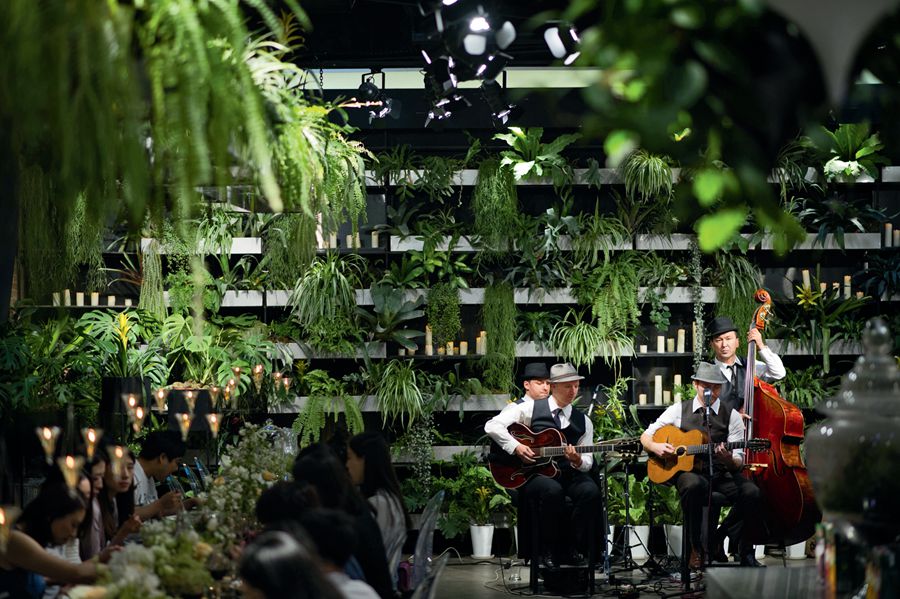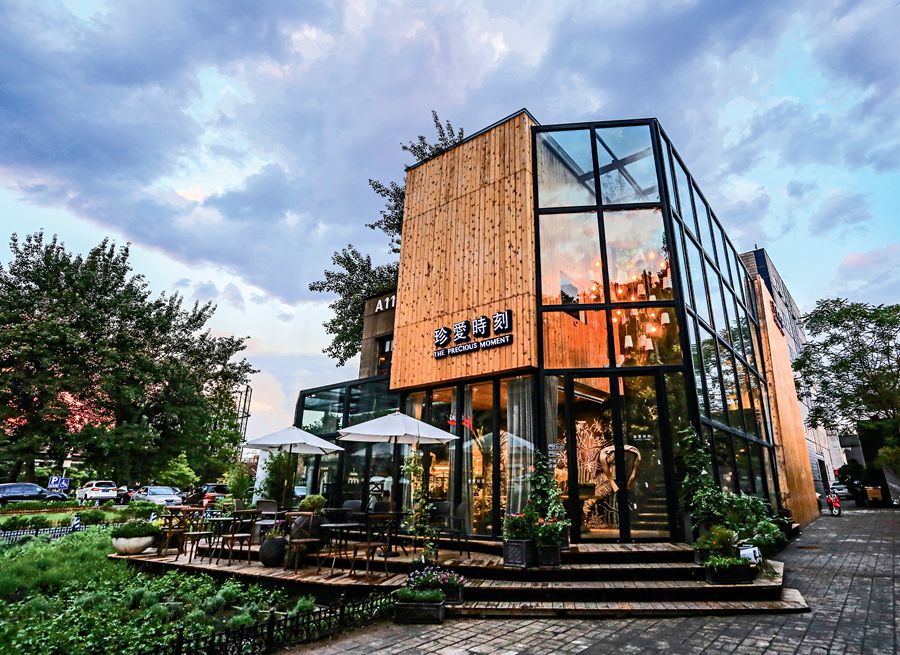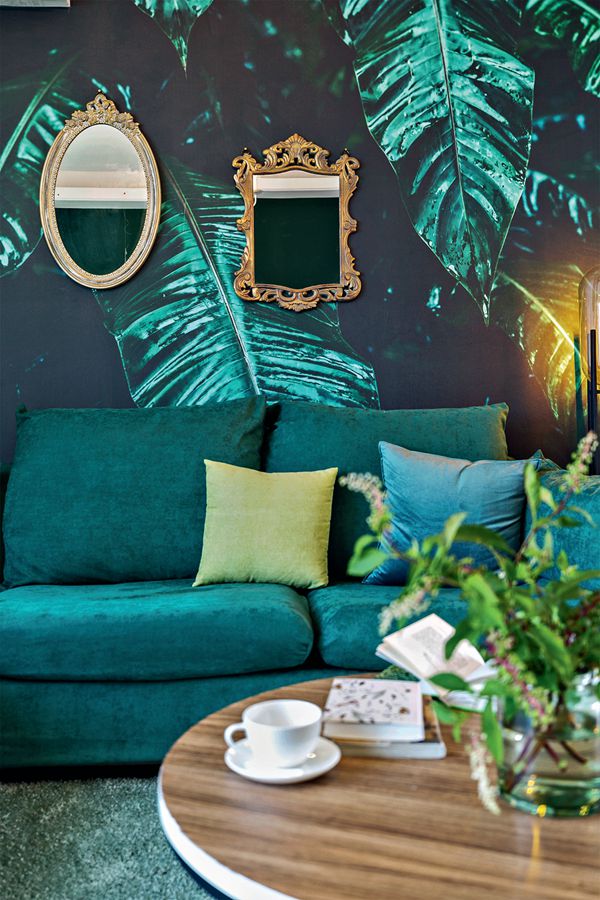IN the age of rapid economic development, green living has become a lifestyle pursued by most Chinese. The green and eco-friendly consumption concept is being integrated into people’s daily lives, making life more comfortable and diverse.
Green Restaurants
Born in the 1990s, Liu Chang, a white collar employee of a foreign company, is a serious foodie. She has tried various restaurants in Beijing because of her love for food, but her favorites are the green restaurants. Enjoying good wine and food in an environment full of refreshing lush green plants, Liu feels relaxed and comfortable after a day of hard work.
Like Liu, there are many Chinese who like to dine in green restaurants. They pursue safe, healthy, and environmentally friendly dining concepts, which have become popular and fashionable with the population. Because of the rising popularity among consumers, multitudes of green restaurants have sprung up in China.
The Precious Moment is a typical botanical restaurant, which Liu often visits. The 300-square-meter restaurant houses more than 3,000 tropical plants of 300 species in Beijing, a city with a northern temperate climate.

Restaurant decorated with lush green plants is becoming a trend.
In such a fresh environment, the diet has also maintained a natural, ecological, and environmentally friendly style. According to Lü Yong, general manager of the restaurant, the restaurant uses organic vegetables and healthy cooking methods to preserve the nutrition of the ingredients as much as possible, while at the same time also ensures the taste of the dishes. In order to realize the concept of “from farm to table,” the restaurant is planning to build a farm on the outskirts of Beijing. “Our restaurant will be further developed into an organically certified restaurant in the future,” he said.
At present, the cost per person to eat at the restaurant is twice as high as that of normal restaurants, but the continuous stream of customers testify that people are readily willing to pay for it.
A growing number of restaurants in China have become green. For example, more than 2,000 restaurants in Shanghai have been rated as “green restaurants.” In May 2018, the Opinions on Promoting the Development of Green Catering was issued by the Ministry of Commerce and other eight departments, suggesting that by 2022, the green concept will be integrated into the whole process of production and consumption, and 5,000 green restaurants will be cultivated, with kitchen waste and energy consumption reduced by more than 20 percent per RMB 10,000 in operating income (tax amount).
Behind the prosperity of green restaurants, the pursuit of healthy diets is becoming an emerging habit with Chinese people. Some of them rent small farms to personally grow organic vegetables, both as a weekend leisure activity and green food supply for themselves. Some organic fruit and vegetable websites based on agricultural science and technology bases are also becoming increasingly popular. Even when purchased from the market, green fruits, vegetables, and meat are becoming progressively popular. In addition, the Chinese cooking style is also changing, reducing frying and increasing stewing and steaming, and the open kitchen concept is becoming increasingly popular.
Green B&Bs
Wang Li, born in 1982, likes to cultivate flowers and plants, and opened a B&B named Zhiyijian with his wife in Shenzhen. He created a dreamlike space by using green plants and other green elements. He wants to use this to convey a concept that “plants can heal the heart.” In his opinion, dealing with plants every day can boost one’s mood.
Inside the B&B, green plants can be seen in the bedrooms and living room; the curtains, carpets, and sofas also display elements of nature. He has also planted herbs such as rosemary, mint, and lavender on the balcony, so that guests can smell the fragrance wherever they are in the building.

The Precious Moment, an organic restaurant in Beijing, attracts lots of diners.
The B&B’s average annual occupancy rate is over 95 percent, and Wang now has four B&Bs.
The prevalence of the green B&B reflects the increasing demand of the public for better living environments. In the past, people liked to live in busy downtown urban areas. Nowadays, ventilated houses in residential communities with large green areas are preferred. Energy-saving buildings have also been accepted by more people. With the increase of urban parks and tree planting, people can enjoy the shade of trees when they are free. This spring, one million new trees were planted in Beijing, and urban parks are becoming more distinctive. Tiancun Park in the western suburbs of Beijing is full of rape flowers and violets, attracting a large number of citizens to visit the park. Besides, people have begun paying more attention to indoor environments. In addition to the use of environmentally friendly decorative materials, the variety of plants grown indoors is also on the rise. Living healthy is becoming a standard to aspire to in urban living.
Horticulture Houses
In order to help citizens get close to horticulture and understand garden culture, in 2018, 33 horticultural houses were built in communities, parks, and schools.
They serve as platforms for citizens to carry out ecological practices such as ecological culture promotion, gardening skills training, and gardening exchange. Since these houses were established, each house has organized rich and diverse ecological and cultural activities for local residents in accordance with its own characteristics.



Interior views of Zhiyijian, a green B&B.
Most of the programs are free. For example, training of flower planting and tending, flower arrangement, and pot culture trimming, lectures on gardening and gardening exhibitions, as well as many public welfare activities are carried out regularly. The horticultural houses can also provide services such as family gardening planning and designing. In addition, some horticultural houses carry out the “plants for waste” activities to guide residents in changing towards a green lifestyle.
Hou Minran, head of a horticultural house in Baiguang Road in Xicheng District, Beijing, said that the house held three public welfare activities every month. The residents not only learn family gardening skills such as fresh cut flower art, narcissus carving, and micro landschaft production for free, they can also bring the finished product home to beautify their own living environment.
“The house provides a platform for learning to those who love flowers but don’t know how to grow flowers,” said Wu Xueqing, a 62-year-old man from Xicheng District. He often participates in various activities held at the house in Baiguang Road. Now he has become a gardening expert, who arranged his bedroom door into a big flower door. Xicheng District is among the most active and thriving horticultural areas in Beijing. On average, there is at least one gardening house in each of its sub-districts. In the past three years, horticultural houses in Xicheng have held 456 events of various types, with a total of 40,000 participants.
In 2019, Beijing will build another 20 horticultural houses with different characteristics. In the future, it will increase the number to 100, and benefit the residents with better ecological and cultural facilities and activities.




